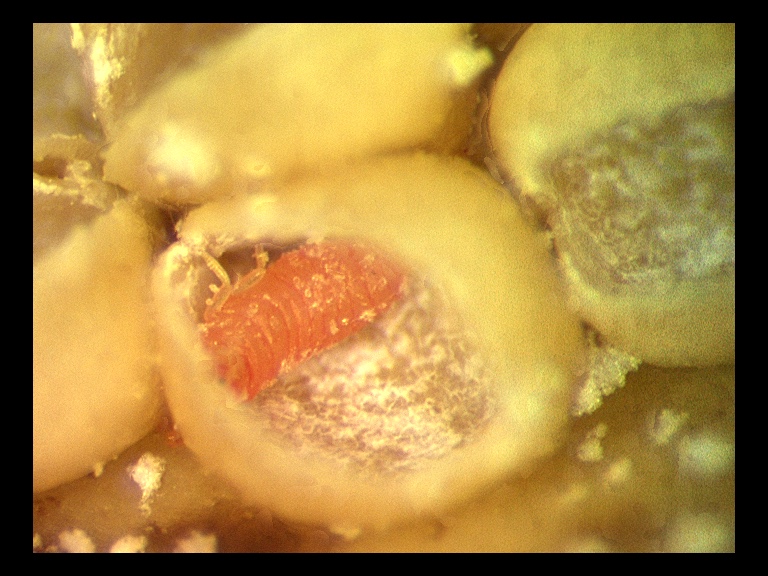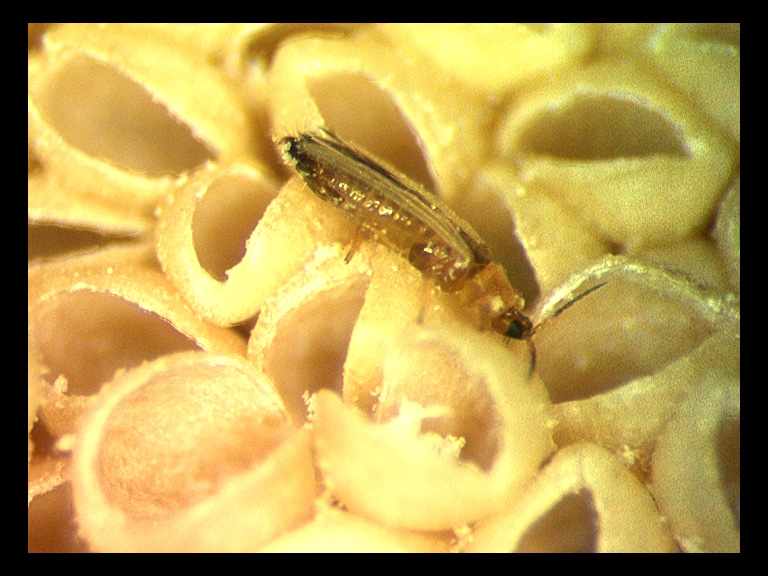The Wonderful World of OZ Cycads
Cycads, one of the most endangered plant groups on earth, belong to an ancient lineage of tropical and semi-tropical gymnosperms with male and female plants. More than half of all cycad species are threatened or endangered. Conservation efforts for some of the endangered species are underway on most continents where cycads are native, yet little effort has focused on their pollinators. Most species have very specific pollinators — and in many cases, only one species of pollinator. This makes it essential for long term viability to conserve not only each species of cycad, but also its host-specific pollinators. Unfortunately, the pollinators for many cycad species are still unknown.
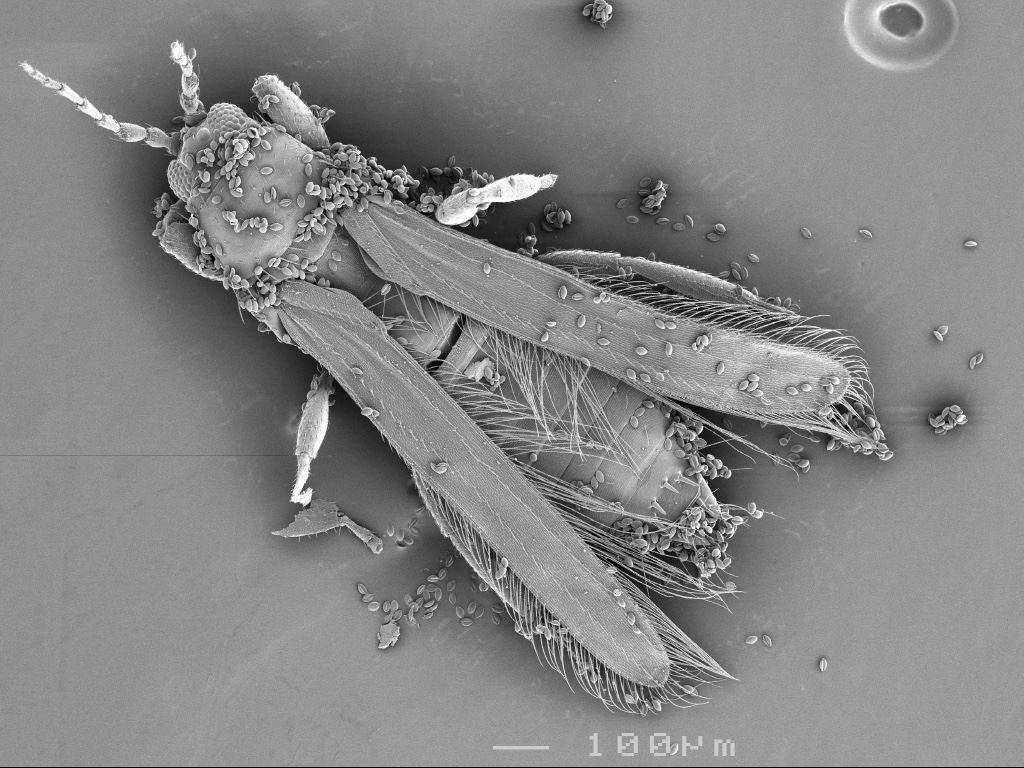
Australia (‘OZ’) is well known for its many iconic and fascinating animals. But the continent is also home to some very unusual plants and the mutualistic animals that interact with them, including endemic cycads and their specific pollinators. OZ has a high diversity of cycads, with four of the 10 cycad genera (Cycas, Bowenia, Macrozamia and Lepidozamia) and more than 60 of the ~ 300 described species. Most cycad pollinators are beetles, but one exception is found in Australia. Thrips in the genus Cycadothrips (Order Thysanoptera) — tiny insects not much larger than a pencil point — are the specific pollinator of many species of Macrozamia, a genus endemic to Australia.
Macrozamia pollination is a story of mimicry and deceit. Male cones release pollen and female cones become receptive over a period of a week to ten days for each cone. Throughout this time, both male and female cones release strong chemical odors and become thermogenic for a few hours each day — heating up to 25°F (~15°C) above the ambient temperature. The heat expels and scent attracts Cycadothrips — but the thrips thrive only on the male cone, where they feed on pollen, breed, and depart, covered with pollen. Returning later in the day, some thrips fly to female cones, where they pollinate but do not breed. In essence, the female cone tricks the tiny pollinators to bring pollen inside by mimicking the male cone’s chemical volatiles. The deluded thrips fly out of the female cone the next day to continue the dance.
The story gets even more complicated, based on molecular biology and chemistry. In eastern Australia, Cycadothrips chadwicki is the named species of pollinator for these Macrozamia species. Although the Cycadothrips all look alike from region to region in the east, molecular genetic studies show that they actually segregate into many different ‘cryptic species’ that are markedly different. Each one is found in a different geographic region from north to south. Furthermore, the chemical lure emitted by cones of Macrozamia varies from region to region, and each cryptic Cycadothrips species appears to be attracted only to specific cone chemicals produced by the Macrozamia within its own region.
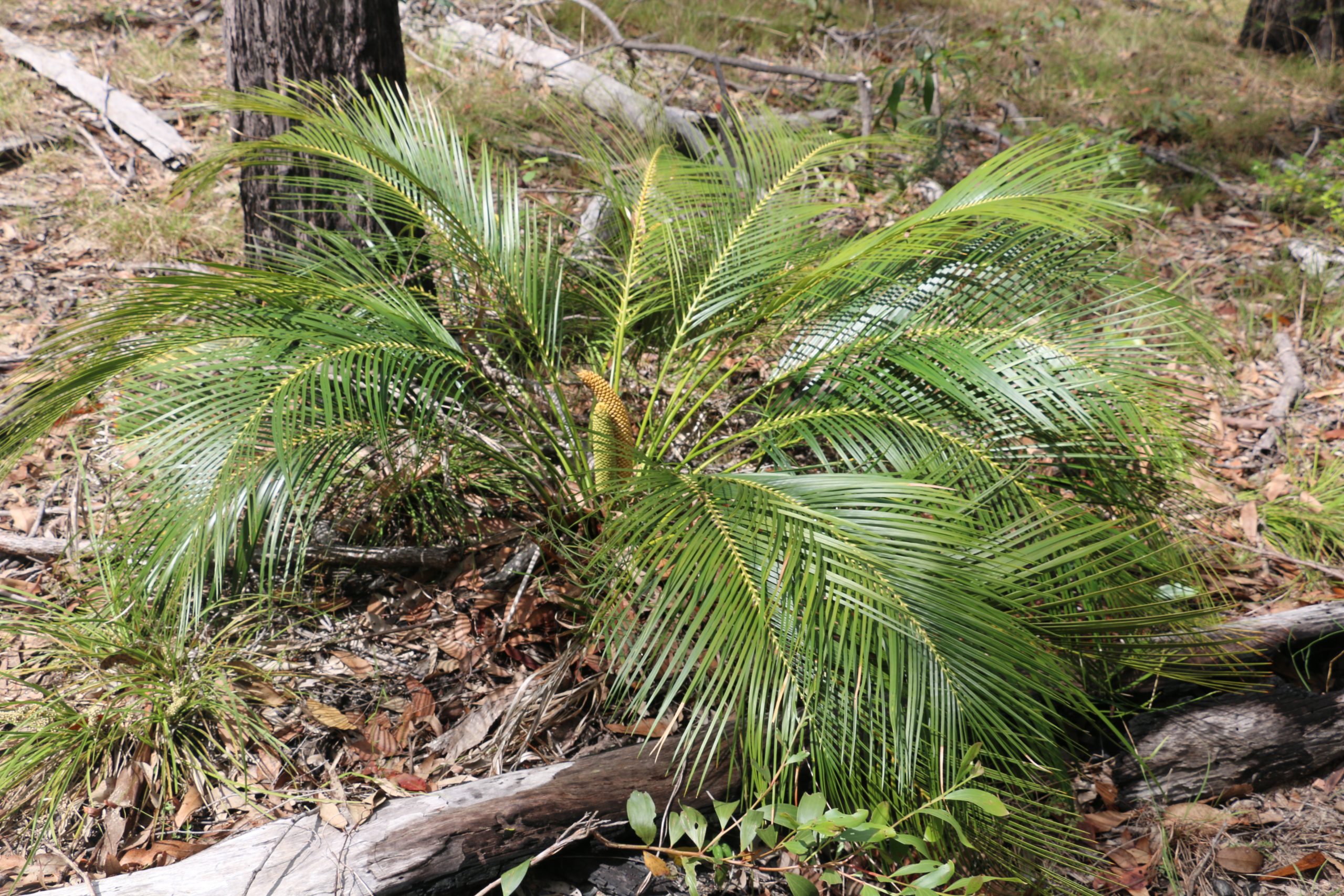
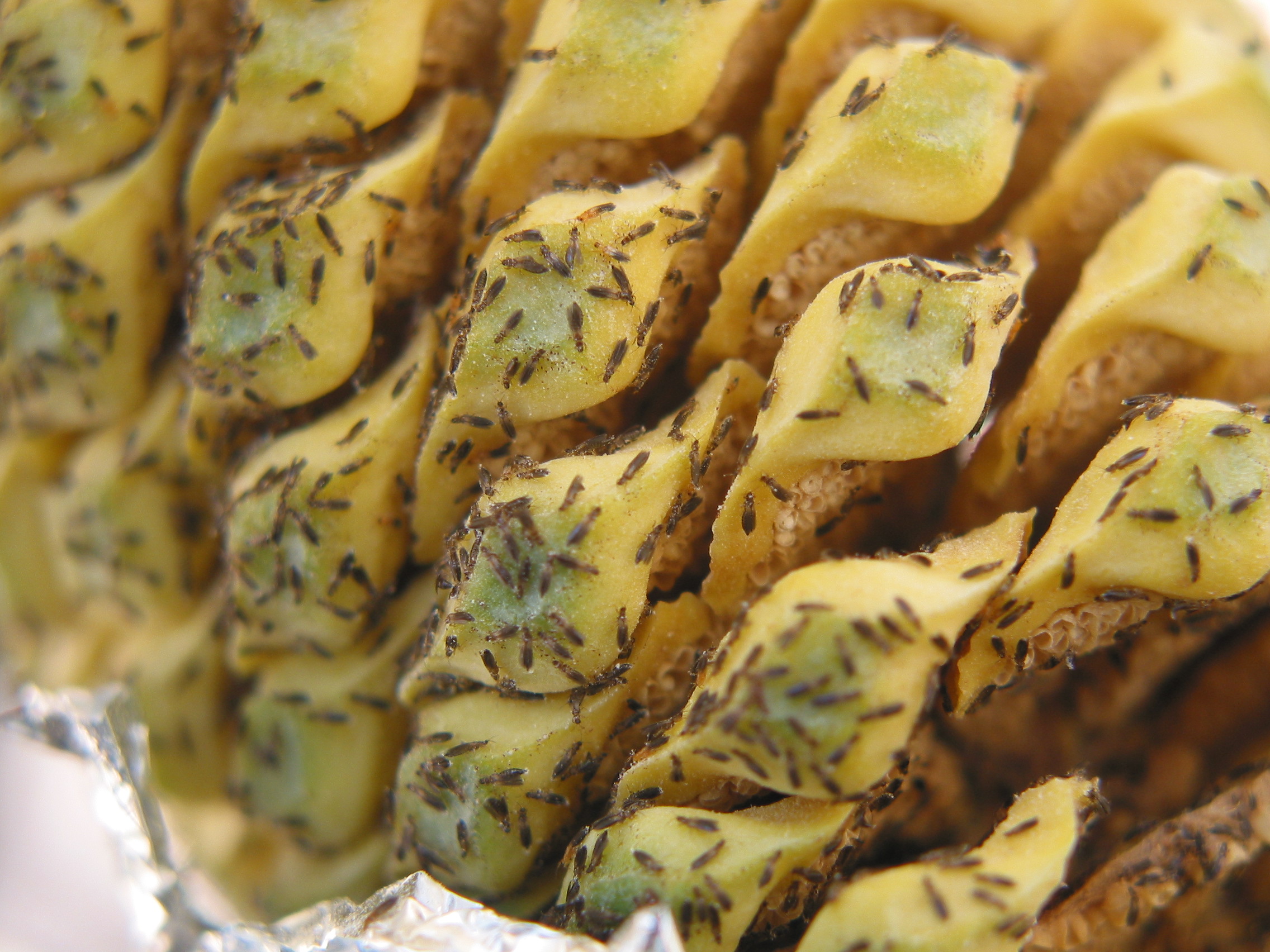
What does this have to do with conservation of cycads and their pollinator? Cycads cannot reproduce without their host-specific pollinator. The pollinator cannot survive without the food and breeding sites provided by male cones. Pollination cannot occur if thrips are not induced to move out temporarily from the comfort of their host cone, and the involvement of thermogenesis and specific cone chemistry is a vital part of the process of expulsion and attraction. Before the molecular studies of the thrips pollinator and the accompanying pollination research, conservation planners only considered having to manage each of the eastern Macrozamia species along with a single thrips pollinator, regardless of the thrips’ home region. Now efforts are needed to better understand how to protect and manage each of the cryptic Cycadothrips species along with its particular host plant. And this type of diversification of cycads and their pollinators appears to occur in other parts of the world, further emphasizing the critical need to fully understand the pollination systems of these iconic plants.
References:
1. Donaldson, J. 2003. Cycads status survey and conservation action plan. International Union for Conservation of Nature: Gland, Switzerland.
2. Fragnière, Y., S. Bétrisey, L. Cardinaux, M. Stoffel, G. Kozlowski. 2015. Fighting their last stand? A global analysis of the distribution and conservation status of gymnosperms. Journal of Biogeography 42: 809-820. Doi: 10.1111/jbi.12480.
3. Brookes, D. R., Hereward, J. P., Terry, L. I., Walter, G. H., 2015. Evolutionary dynamics of a cycad obligate pollination mutualism – Pattern and process in extant Macrozamia cycads and their specialist thrips pollinators. Molecular Phylogenetics and Evolution. 93: 83-93. DOI:.org/10.1016/j.ympev.2015.07.003.
4. Terry, I., C. Moore, R. Roemer, and G. Walter. 2021. Unique chemistry associated with diversification in a tightly coupled cycad-thrips obligate pollination mutualism. Phytochemistry 186: article 112715: 1-19. doi.org/10.1016/j.phytochem.2021.112715.
